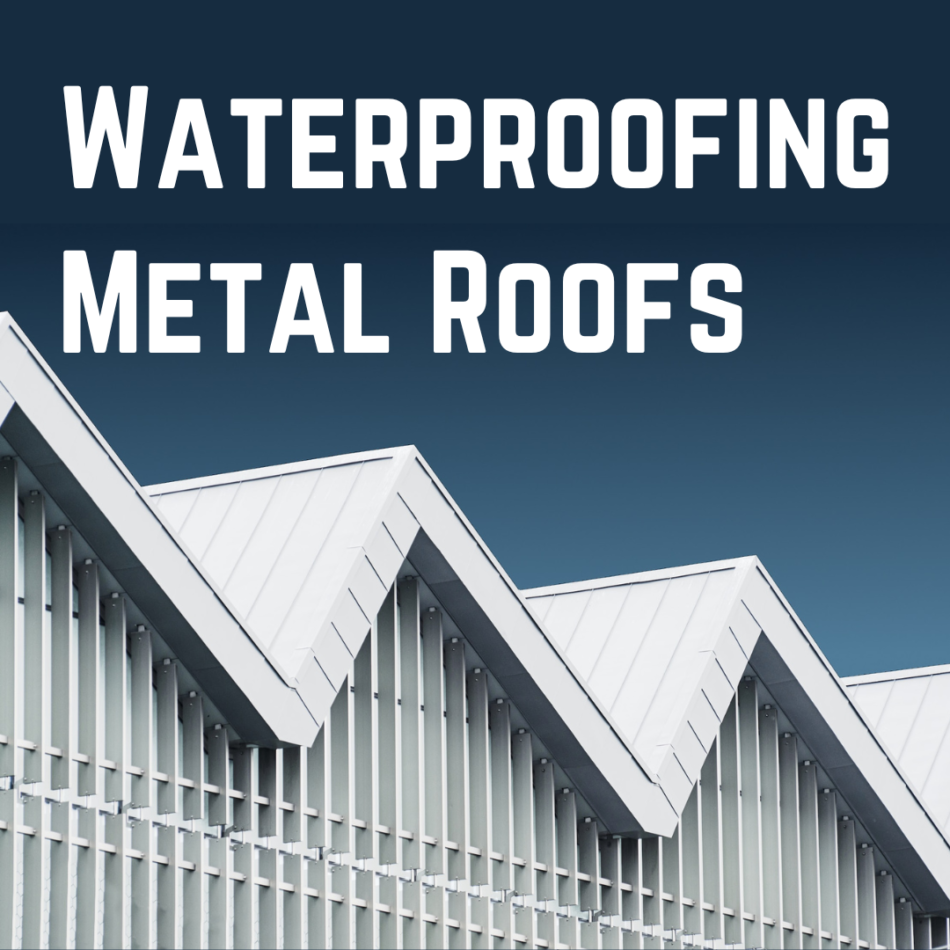Metal roofing has gained immense popularity over the years due to its durability, longevity, and aesthetic appeal. However, like any roofing material, metal roofs require proper waterproofing to ensure they remain leak-free and perform optimally. In this article, we will explore essential aspects of waterproofing metal roofs, including roofing underlayments, metal sidewall protection, vapor retarders, evaluating roof needs, and share two case studies to illustrate the importance of a watertight roofing system.
Roofing Underlayments: The Foundation of Metal Roof Waterproofing
Roofing underlayments play a crucial role in waterproofing metal roofs. These are the layers installed between the metal roofing material and the roof deck. There are two main types of underlayments for metal roofs: synthetic and felt.
- Synthetic Underlayments: These are popular due to their lightweight, durability, and resistance to moisture. Synthetic underlayments act as a secondary barrier against water intrusion, preventing leaks from reaching the roof deck.
- Felt Underlayments: Asphalt-saturated felt underlayments are traditional but still effective. They provide a protective barrier against moisture and offer some insulation benefits.
Selecting the appropriate underlayment depends on factors like climate, roof pitch, and local building codes. Proper installation is crucial to ensure the underlayment’s effectiveness.
Metal Sidewall Protection: Guarding Against Water Intrusion
Metal sidewall protection, including flashings and sealants, is essential for ensuring a watertight metal roof. Flashings are typically made from metal and are installed at vulnerable points such as roof penetrations, valleys, and edges. They help direct water away from these areas, preventing leaks.
Sealants, such as silicone or polyurethane-based products, are used to seal joints, seams, and fasteners on metal roofs. These sealants provide an extra layer of protection against water intrusion and help maintain the roof’s integrity.
Vapor Retarder: Managing Moisture from Below
In addition to external sources of moisture, it’s essential to address moisture from within the building itself. A vapor retarder, also known as a vapor barrier, is installed on the warm side of the roof assembly to prevent warm, moist air from condensing within the roof structure. This condensation can lead to rot and corrosion in metal roofs.
Evaluating the Roof’s Needs: Customizing Waterproofing Solutions
Every metal roof is unique, and the approach to waterproofing should be tailored to its specific requirements. Factors to consider when evaluating a roof’s needs include:
- Climate: Different regions face varying weather conditions, which can impact the choice of materials and installation methods.
- Roof Pitch: The pitch of the roof affects water runoff and drainage, influencing the selection of underlayment and the design of flashings.
- Building Use: The purpose of the building, whether residential, commercial, or industrial, may necessitate different waterproofing solutions.
- Local Building Codes: Compliance with local building codes and regulations is essential to ensure the roof meets safety and performance standards.
Bottom Line: The Importance of Professional Waterproofing
Proper waterproofing of metal roofs is not just a matter of convenience; it’s essential for the long-term performance and durability of the roofing system. Without adequate waterproofing measures, metal roofs can develop leaks, leading to costly damage and repairs.
Case Study 1: Residential Metal Roof Waterproofing
In a residential case study, a homeowner in a rainy climate experienced water intrusion through their metal roof. An inspection revealed that the existing underlayment was outdated and had deteriorated over time. The roofing contractor replaced the underlayment with high-quality synthetic material, installed new flashings, and sealed all joints and seams. This comprehensive waterproofing solution resolved the issue, keeping the home dry and protected.
Case Study 2: Industrial Metal Roof Waterproofing
In an industrial setting, a metal roof on a manufacturing facility began to show signs of corrosion due to moisture infiltration. The building owner decided to invest in a vapor retarder and upgraded insulation to control interior moisture. Additionally, they opted for robust synthetic underlayment and metal sidewall protection with durable sealants. This holistic approach to waterproofing not only eliminated moisture-related problems but also enhanced the roof’s energy efficiency and longevity.
In conclusion, waterproofing is a critical aspect of ensuring the longevity and performance of metal roofs. By selecting appropriate underlayments, addressing metal sidewall protection, managing moisture with vapor retarders, customizing solutions, and adhering to local codes, property owners can enjoy the benefits of a reliable and leak-free metal roofing system. Waterproofing is an investment that pays off in the form of a dry, comfortable, and secure building.





